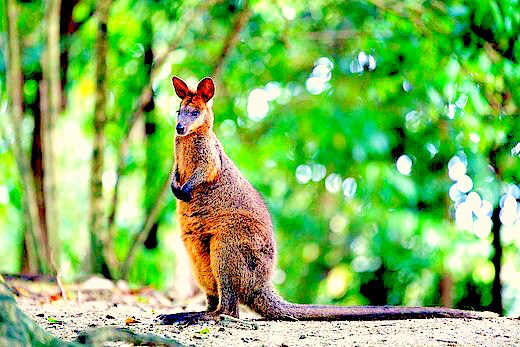Swamp wallaby (Wallabia bicolor) The swamp wallaby is a diprotodont marsupial with a bilophodont occlusal pattern. Females have pouches that open anteriorly and contain four mammae. The forelimbs, which are significantly smaller than the hindlimbs, contain five digits and are used for eating and slower movements. The hallux is absent in the hindlimbs which are syndactylous and elongated for use in rapid bipedal motion. The fourth toe is the longest and the most specialized digit of the hindfoot. This, along with the loss of the hallux, has adapted this species for hopping. Wallabia bicolor is, on average, 70 cm tall with males weighing 12.3-20.5 kg and females weighing 10.3-15.4 kg. Body and tail length vary according to sex; males are 72.3-84.7 cm long with a tails of 69-86.2 cm and females are 66.5-75 cm in length with tails ranging from 64 to 72.8 cm. The swamp wallaby has long, coarse fur that is generally dark brown in colour with darker or black limbs and tails. Many also have a light yellowish cheek stripe that begins at the lip and continues towards the upper ear.
